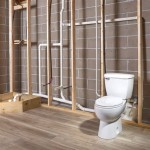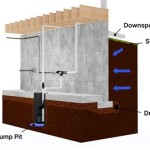How to Add a Bathroom to a Basement: A Comprehensive Guide
Transforming your unfinished basement into a fully functional living space often involves adding a bathroom. Whether you desire a convenient powder room or a luxurious full bathroom, creating a basement bathroom requires careful planning and execution. This guide will provide you with all the essential aspects to consider when undertaking this project.
1. Determine Your Needs and Design
Begin by assessing your bathroom needs. Consider the number of fixtures (toilet, sink, bathtub/shower), storage space, and desired amenities. Plan a layout that accommodates these needs efficiently and ensures a comfortable flow of movement within the space.
2. Check for Existing Plumbing and Electrical
Inspect your basement for any existing plumbing or electrical lines that may be accessible for the bathroom. If none is present, you will need to run new lines from the nearest source in your home. This step requires proper planning and may involve hiring a licensed plumber and electrician.
3. Waterproofing and Drainage
Basements are prone to moisture and humidity, so waterproofing is crucial to prevent leaks and protect the new bathroom from damage. Install a sump pump to remove excess water and apply a waterproof membrane to the walls and floor. Properly grading the surrounding soil to slope away from the basement is also advisable.
4. Ventilation
Adequate ventilation is vital to control moisture, prevent mold growth, and remove odors. Install a bathroom fan with sufficient ventilation capacity. Ensure the fan exhausts directly to the outside, not into the basement ceiling.
5. Fixtures and Finishes
Choose bathroom fixtures that complement the design and fit within the available space. Consider durable materials such as ceramic tile for flooring and walls, and opt for moisture-resistant fixtures for longevity. Lighting is also essential; include ambient lighting, task lighting over the vanity, and ventilation lighting in the shower area.
6. Code Compliance and Permits
Ensure that your bathroom addition complies with local building codes and obtain the necessary permits before commencing work. Code requirements may vary regarding plumbing, electrical, ventilation, and structural aspects. Failing to obtain permits can result in fines or legal issues.
7. Professional Assistance
While some aspects of adding a bathroom to your basement can be DIY projects, consider consulting with professionals for complex tasks such as plumbing, electrical work, and waterproofing. Licensed contractors can ensure the safety and longevity of your new bathroom.
Conclusion
Adding a bathroom to your basement is a worthwhile investment that enhances the functionality and value of your home. By carefully considering the essential aspects outlined in this guide, you can create a functional and aesthetically pleasing bathroom that meets your needs and complements your existing space. Remember to adhere to building codes, consult professionals for specialized tasks, and enjoy the convenience of a newly renovated basement bathroom.
How To Plumb A Basement Bathroom Diy Family Handyman

No Rough In Problem Our Diy Bathroom Basement From A Closest Cheap And Beautiful This Life

How To Diy Bathroom In Basement Without Breaking Concrete

Cost To Add A Basement Bathroom Bright Green Door

Adding A Basement Bathroom What You Need To Know Make It Right

Adding A Bathroom To Basement Pros Cons Costs

Basement Bathroom Plumbing Planning For A Below Grade Lavatory

Basement Bathroom Plumbing Planning For A Below Grade Lavatory

7 Things To Consider When Planning A Basement Bathroom Sheffield Homes Finished Basements And More

How To Add A Basement Bathroom Process And Tips
See Also








